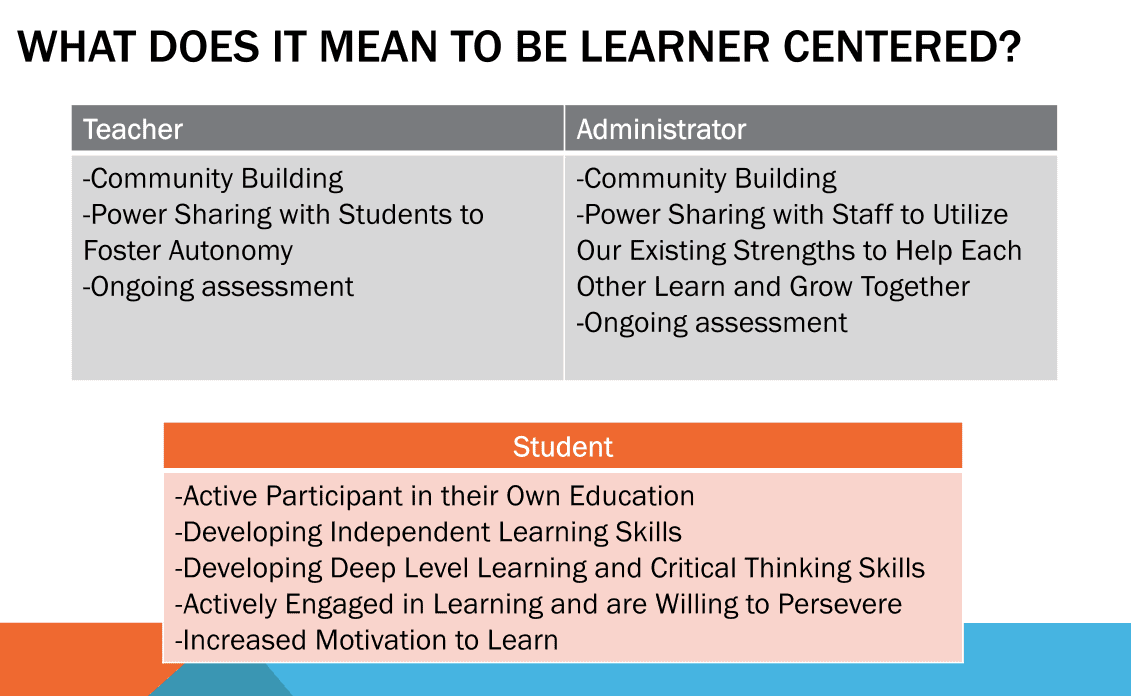by Constance Bahn, MEF International School
What is Blended Learning (BL)? Blended learning (BL) is an effective learner-centered and student-centered pedagogy strategy to develop independent and resilient students with self-efficacy and perseverance to solve problems at their own pace through using learners’ own technologies, online communities, and instant messaging; supporting learning at any place and at any time (Gyamfi, 2015).
Using a mixture of online resources based on student learning needs and immediate feedback, students are able to learn at their own pace and tailor their own learning. Teachers are able to provide instant feedback to students through the use of technology for instant access to student created work (What is blended learning, 2017). The transmissive pedagogy style of BL uses provisional supplementary online resources for learning programs provided along with face-to-face instruction, using the virtual learning environments (VLEs) as a place to provide extra support through placing classroom resources online, such as the lecture notes according to Sharpe, Benfield, Roberts & Francis, 2006 as cited by Gyamfi (2015).
The Research Behind it:
The blended classroom enhances learning through dynamic interactions by aligning assessment strategies to learning objectives of the course (Gyamfi, 2015). Blended classrooms provide supports to students through the holistic model promoting a climate and culture of students who self-assess their work and feel more motivated to excel and advance their understanding through proper modeling, feedback, varied learning strategies available, honest and effective online learning community development, and the ability to focus the work within and outside of the classroom on the real world (Scott, 2016).
BL strategy embodies learner-centered education by:
- Giving the learner 24/7 access to course content
- Providing access to all learning materials
- Enabling the learner to learn at their own pace
BL enables educators to assess learner understanding, misconceptions, successes, and the ability to provide in class hands-on activities based on individual learning needs (Mary, 2016). BL meets the needs’ of all learners through changing the role of the instructor to facilitator and empowering the learner to construct knowledge at their own pace through their own path to develop their own understanding (Mary, 2016).
Student Centered Classroom and Learner Centered Strategies:
Student-centered philosophies focus on the needs of the individual and focus on preparing students for a changing future, shifting the role of the teacher from disseminating information to students being an active facilitator of learning (Jooneghani, & Massouleh, 2012). Student-centered learning (SCL) encourages analytical, innovative, creative, and critical thinking among students Wahjuni (2012) and creates self-directed learners who are able to plan, set goals, select strategies, organize, self-monitor and self-evaluate throughout the learning process, and enables learners to be self-aware, knowledgeable, and decisive in their approach to learning (Michalsky, 2012). Students can keep a collection of their work that they use to self-assess their mastery of a set of skills, apply knowledge and attitudes, and demonstrate their growth as a learner to continually develop self-directed learning beliefs in students (Lofciu, Miron, & Antohe, 2013).

(Cullen, Harris, and Hill, 2012)
The key components of a learner-centered curriculum are based on instructors sharing power with students to develop creativity through increased motivation and persistence, not additional reward. This aids in developing a learner who is learning goal oriented: motivated to understand and tackle new concepts and does not fear failure, but looks at failure as an opportunity to reflect, learn from, and to develop a deeper understanding (Cullen, Harris, & Hill, 2012).
Learner-centered curriculum transforms these philosophies into a working definition of learning being both an internal process (the existing knowledge of the learner being able to make sense of the world and facilitating the ability and motivation to use it) and an external process of negotiation between individuals and society: the learner must do their best to achieve the targets set by society or reject the target altogether, while controlling the path and pace they travel to that achievement (Jooneghani & Massouleh, 2012). Learner-centered instruction is controversial, yet well advised in education because it is comprised of multiple student-centered philosophies, leaving it open to multiple interpretations (Jooneghani, & Massouleh, 2012).
Use of Google Apps for Education:
Google Apps For Education (GAFE) has several composing and collaborative uses that according to Google (n.d.a.) as cited by Brown (2015) “is an ideal environment for learning in the 21st century.” GAFE allows students to:
- Collaborate with their teachers and each other
- Use it to gather summative, formative, and evaluative assessment data
- Gather quantitative and qualitative data from parents and students alike
- Continue to use it to communicate projects, homework, school events, and class expectations to students and parents
- Enables parents and teachers to communicate about how students are experiencing school (Brown, 2015).
BL in conjunction with GAFE enables teachers to provide students direct and immediate feedback on work, private feedback messages, and share course material and resources (Scott, 2016).
Age Appropriate for Secondary Setting vs. Flipped Learning:
Blended learning and flipped classroom (learning) rely on combining face-to-face communication and online communications, giving the learner 24/7 access to course content, enabling teachers to create hands-on activities based on individual learning needs (Mary, 2016). The flipped classroom:
- Provides an opportunity for students to apply their ‘new’ factual knowledge
- Gives access to immediate feedback from both their peers and the instructor
- Helps students learn to correct misconceptions
- Organizes their new knowledge for future use
- Takes control of their own learning through a metacognitive instructional approach (Brame, 2013).
This approach is dependent upon motivating students to participate in the pre-learning materials, in the cases provided this was done by applying an assigned grade to material being completed outside of class, or grading through compliance of completing work.
Blended learning creates self-motivated learners through the accountability of participating in a community that is interacting with the learning materials together, rather than relying on students completing homework before they come to class. At all times the instructor is facilitating learning, modeling expectations, and creating a rich learning community through the use of technology (Scott, 2016). Peer evaluation on homework may be more meaningful for school aged children because they are thinking about the feedback they are giving and receiving and take ownership in the learning process (Meškauskienė, 2016), rather than just completing a homework assignment for use in class the next day. I do think a blended and flipped classroom approach combined may be the key for getting students to be motivated because they will be engaging in peer interaction as well as self and peer evaluations (Scott, 2016).
Conclusion:
Student-centered learning and learner-centered curriculum are the philosophical and pedagogical foundations for flipped classrooms and blended learning. Similarities between the two are:
- The focus on students constructing their own knowledge through experience
- Instruction based on learner needs
- The teacher acting as a facilitator sharing power with students
- Students working collaboratively to apply their skills and knowledge to the task using collaborative research and support of scaffolded resources that the teacher provides while engaging in a growth mindset (Jooneghani & Massouleh, 2012; Mary, 2016; Cullen, Harris, & Hill, 2012; Gault, 2007; Giles & Eyler, 1994; Furco, 2002; Ertner, 2006).
These methods allow students to reveal their academic potential (Gallagher & Gallagher, 2013) and develop critical thinking skills, allowing students to develop into life long, goal oriented learners capable of adapting to our ever-changing global society (Weimer, 2013).

References
Brown, M. E., & Hocutt, L. D. (2015). Learning to use, useful for learning: a usability study of Google apps for education. J. Usability Studies 10, 4 (August 2015), 160-181.
Cullen, R., Harris, M., & Hill, R. R. (2012). The learner-centered curriculum: Design and implementation. San Francisco, CA: Jossey-Bass.
Ertmer, P. A., & Simons, K. D. (2006). Jumping the PBL implementation hurdle: Supporting the efforts of K–12 teachers. InterdisciplinaryJournal of Problembased Learning, 1(1), 40–54. Retrieved from http://docs.lib.purdue.edu/ijpbl/vol1/iss1/5
Furco, A., & Billig, S. H. (Eds.). (2002). Service-learning: The essence of the pedagogy. Greenwich, CT: Information Age Publishing.
Gallagher, S. S., & Gallagher, J. J. (2013). Using problem-based learning to explore unseen academic potential. Interdisciplinary Journal of Problem-Based Learning, 7(1), 110–131. doi:10.7771/1541-5015.1322
Gault, Terry. (2007). Growth or Fixed Mindset? Retrieved from: http://terrygault.blogspot.com/2007/08/growth-or-fixed-mind- set.html
Giles, D. E., Jr., & Eyler, J. (1994). The theoretical roots of service-learning in John Dewey: Toward a theory of service-learning. Michigan Journal of Community Service Learning, 1(1), 77–85. Retrieved from http://digitalcommons.unomaha.edu/cgi/viewcontent.cgi?article=1152&context=sl ceslgen
Gyamfi, S. A., & Gyaase, P. O. (2015). Students’ perception of blended learning environment: A case study of the University of Education, Winneba, KumasiCampus, Ghana. International Journal of Education and Development
Iofciu, F., Miron, C., & Antohe, S. (2012). Constructivist approach of evaluation strategies in science education. Procedia - Social and Behavioral Sciences, 31, 292–296. https://doi.org/10.1016/j.sbspro.2011.12.057
Image (2017). Retrieved from https://www.greeleyschools.org/Page/13456
Jooneghani, R. B. & Massouleh, N. S. (2012). Learner-centered instruction: A critical perspective. Journal of Education and Practice, 03(6), 50-59. Retrieved from https://www.researchgate.net/profile/Nima_Shakouri4/publication/268016132_Learner-Centered_Instruction_A_Critical_Perspective/links/5712a2df08ae39beb87a47b5.pdf
Mary, A. (2016). Blended and flipped: Exploring new models for effective teaching and learning. International Journal Of Emerging Trends In Science And Technology, 03(11), 4784-4787. http://dx.doi.org/10.18535/ijetst/v3i11.10; https://pdfs.semanticscholar.org/58b3/8c127ba2150934168cec9d6ea75387a70303.pdf
Meškauskienė, A., l., & Guoba, A., l. (2016). The Impact of Assessment and Self-assessment Methods of Learning Achievements and Progress on Adolescent Self-esteem Building. Mokymosi Pasiekimų Ir Pažangos Vertinimo Bei Įsivertinimo Įtaka Paauglių Savigarbai., 124(4), 160–171. https://doi.org/10.15823/p.2016.59
Michalsky, T. (2012). Shaping self-regulation in science teachers’ professional growth: Inquiry skills. Science Education, 96(6), 1106–1133. https://doi.org/10.1002/sce.21029
Netcoh, S. (2017). Balancing freedom and limitations: A case study of choice provision in a personalized learning class. Teaching and Teacher Education, 66, 383–392. https://doi.org/10.1016/j.tate.2017.05.010
Scott, R. (2016). Blended learning for school leaders: Combining online instruction with residency offers critical hands-on experience. Principal Leadership, May 2016, 47–51.
Wahjuni S.IP, S. (2012). Interest based language teachings in EFL for ‘Yahya’ school teachers: Increasing communicative skills and
student-centered learning. Procedia - Social and Behavioral Sciences, 66, 267–282. https://doi.org/10.1016/j.sbspro.2012.11.26
Weimer, M. (2013). Learner-centered teaching: Five key changes to practice (2nd ed.). San Francisco, CA: Jossey-Bass.
 Constance Bahn has worked for 14 years as an educator both within schools and in the field of marketing. She holds a master’s degree in Education with a focus on Curriculum, Instruction, and Assessment and is currently in her dissertation candidacy at Walden University. She is studying Education with a focus in Curriculum, Instruction, Assessment, and Evaluation. She has worked in public schools in the United States and international private schools in Japan and Turkey. She voluntarily developed and scaffolded curriculum and instructional plans for two non-profit organizations. She is presently a grades 6, 7, and 10 Biology instructor, and a grade 11IB Environmental Systems and Societies instructor in the private international school of MEF IS in Istanbul, Turkey.
Constance Bahn has worked for 14 years as an educator both within schools and in the field of marketing. She holds a master’s degree in Education with a focus on Curriculum, Instruction, and Assessment and is currently in her dissertation candidacy at Walden University. She is studying Education with a focus in Curriculum, Instruction, Assessment, and Evaluation. She has worked in public schools in the United States and international private schools in Japan and Turkey. She voluntarily developed and scaffolded curriculum and instructional plans for two non-profit organizations. She is presently a grades 6, 7, and 10 Biology instructor, and a grade 11IB Environmental Systems and Societies instructor in the private international school of MEF IS in Istanbul, Turkey.

